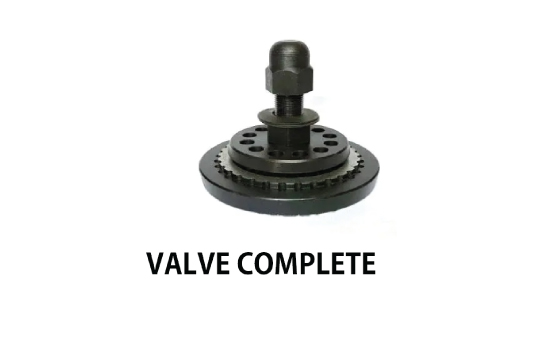-
Call
-
Whatsapp
9825014048
-
Location


Piston Compressor Valve
Piston Compressor Valve
Known for its reliability and versatility, piston compressor is used in a variety of industries to produce compressed air or gas. In this machine in particular, there is one important feature: the completion of the piston compressor valve. This seemingly simple but important part plays a vital role in controlling the air or airflow to the compressor, and determines its performance and efficiency In this detailed guide we will go deeper in the world of piston compressor valves.
Piston compressors, also known as reciprocating compressors, rely on pistons to draw in air or air and compress it in a cylinder. The compressor valve is an integral part of this process, preventing backflow and ensuring that air or air flows in the desired direction. Generally, a piston compressor has two main types of valves: an inlet valve and a discharge valve.
The main function of the piston compressor valve
- Air flow control: Valves control the flow of air or air into and out of the compression chamber. They open and close at specific times to facilitate the compression and release of air or gas.
- Preventing backflow:One of the main functions of a compressor valve is to prevent backflow. During pressurization, the inlet opens to allow gas or air to enter the cylinder, while the exhaust valve remains closed to prevent backflow
- Check for proper operation: Efficient valve operation is essential for proper operation of the compressor. Proper timing and sealing prevent loss of energy and maximize compression efficiency.
- By reducing heat generation the valves help control temperature in the compressor. Opening and closing properly reduces heat loss, preventing excess heat from entering.
Piston compressor valve types
There are different types of compressor valves, and each one is designed for a specific application and operating conditions. The most common types are:
- Plate Valve: A plate valve has a flat, evenly cut plate. They are commonly used in small piston compressors and are known for their simplicity and reliability.
- Poppet valve: A poppet valve uses a spherical or conical shaped plug that fits into a corresponding seat. It is found in large, high-performance piston compressors and allows for precise control of airflow.
- Reed valves: Reed valves use thin materials (reeds) that blow to allow or block the flow of air. They are commonly used in smaller compressors and provide excellent seals.
Materials for valves
Valve materials are selected for durability, wear resistance, and compatibility with the compressor’s operating conditions. Common uses include:
- Stainless steel: Stainless steel valves provide excellent corrosion resistance and durability. It is often used where ventilation is critical.
- Copper:Copper valves are known for their durability and corrosion resistance. Commonly used in industrial compressors.
- Aluminum:Aluminum hinges are lightweight and corrosion resistant. They are suitable for small compressor and portable units.


FAQ

Frequently Ask Questions
Piston compressor valves play a crucial role in regulating the flow of air or gas into and out of the compressor cylinder during the compression and exhaust strokes. These valves ensure the efficient operation of the compressor by allowing air or gas to enter the cylinder for compression while preventing backflow during the exhaust stroke.
Signs of worn or faulty piston compressor valves may include reduced compression efficiency, abnormal compressor noises, such as knocking or hissing, fluctuating pressure levels, or increased energy consumption. Additionally, visual inspection during maintenance can reveal signs of wear, damage, or corrosion on the valves, indicating the need for replacement.
The two primary types of piston compressor valves are inlet valves and discharge valves. Inlet valves, also known as suction valves, control the intake of air or gas into the compressor cylinder during the compression stroke. Discharge valves, also called exhaust valves, regulate the release of compressed air or gas from the cylinder during the exhaust stroke. These valves are typically made of durable materials such as stainless steel or carbon steel to withstand high pressures and temperatures.

